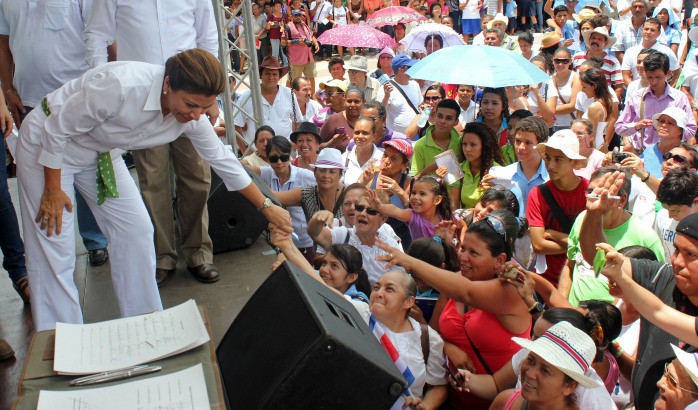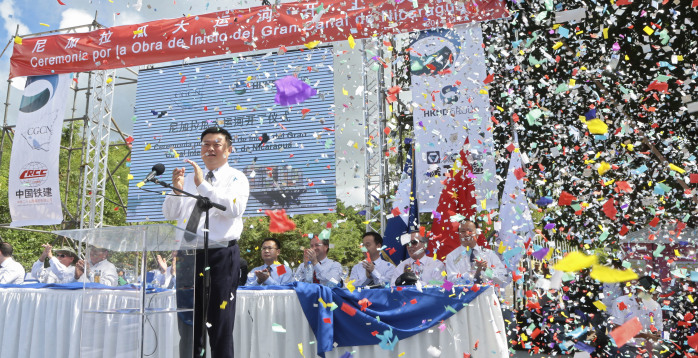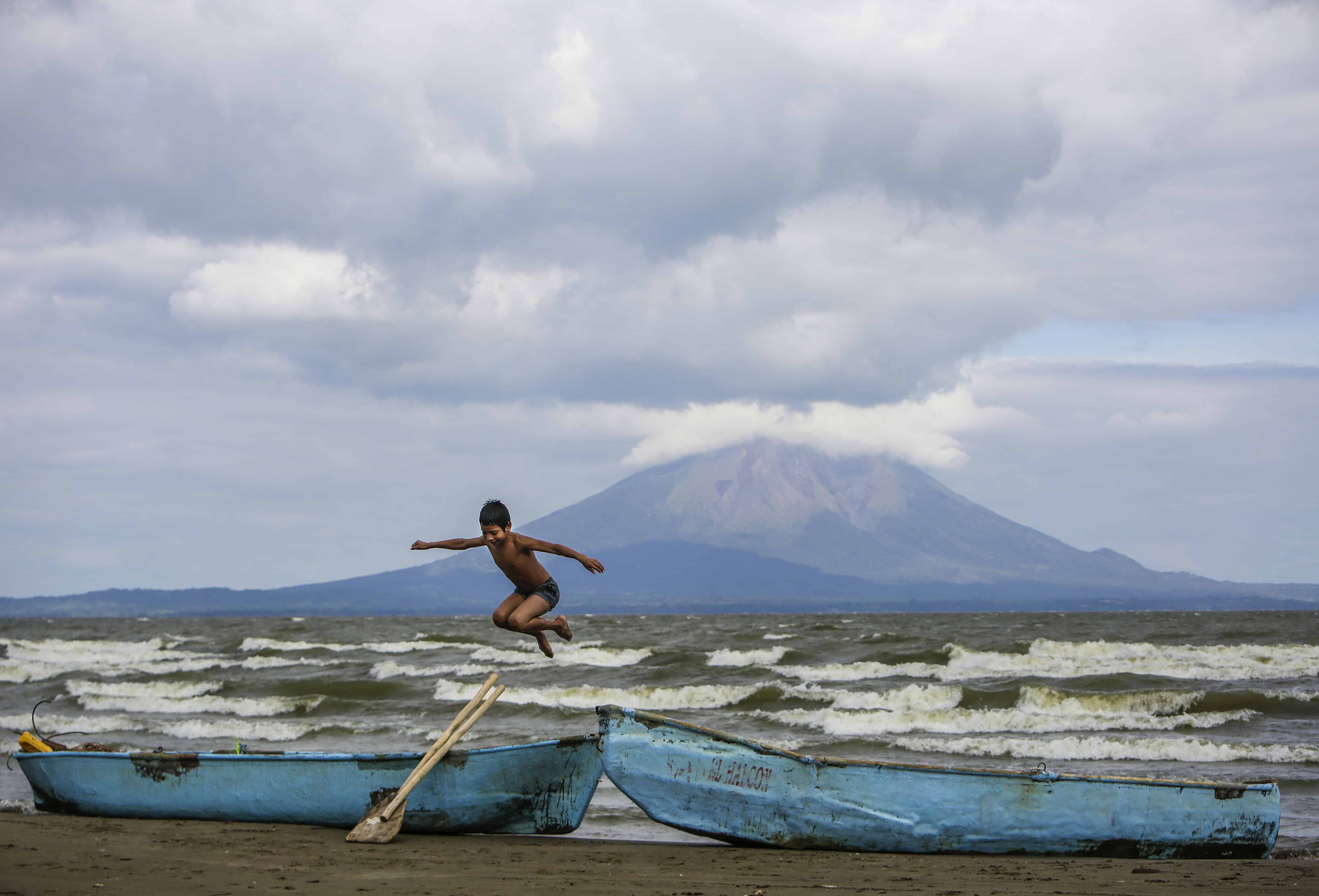Related: Journalists harassed, detained in latest chapter of Nicaragua canal saga
Since the idea to build a massive interoceanic canal in Nicaragua first gained traction a few years ago, Costa Rica has expressed its concern over potential environmental damage the canal could cause in both countries.
Costa Rica has been seeking information – including specific environmental assessment details and routes – from its northern neighbor for four years. But even today, as the $50 billion project moves forward, Costa Rican officials say they have received little information to assuage concerns.
Costa Rican officials say that letters they have sent to their Nicaraguan counterparts requesting information have largely been unanswered. The few replies Costa Rica has received have failed to shed new light on the bold and largely secretive initiative.
The announcement
An announcement in February 2012 by Nicaragua’s President Daniel Ortega about the decision to build the canal via that country’s Río San Juan – which flows between the two countries and serves as part of the 309-kilometer border – set off alarms in Costa Rica about potential environmental consequences.
Immediate concerns focused on the possibility that dredging the river could pollute its Costa Rican tributaries, mainly Río Colorado, and the historically recurrent tension in both neighbors’ complex relations soared again.
The river runs for some 120 kilometers between the Nicaraguan towns of San Carlos, on the southwestern shore of Lake Cocibolca – also known as Lake Nicaragua – and San Juan del Norte, on the southern end of that country’s Atlantic Coast.
Ortega’s announcement that year also caused concern in Costa Rica that the eventual waterway would alter the San Juan basin’s ecosystem in both countries.
The following day, then-Foreign Vice Minister Carlos Roverssi told Radio ADN that Costa Rica would request an explanation from Nicaragua.
Since the canal would use the San Juan, over which Costa Rica has navigation rights, Nicaragua must comply with international obligations, he warned.
“We’ll send Nicaragua a note asking them to inform us of their intentions, whether in effect they’re doing real studies for an interoceanic canal, … or if it is simply another ‘fachentada’ [bluff] by Mr. Ortega to distract attention from internal problems he may be facing,” Roverssi said in 2012.
See also: Ramsar delegation arrives in Nicaragua to survey wetlands along proposed canal route
Ortega’s and Roverssi’s statements came while the International Court of Justice had begun studying both Central American nations’ most recent territorial dispute, dating back to October 2010.
Costa Rica accused Nicaragua of having invaded its territory at Isla Portillos, known by Nicaraguans as Harbor Head, and having caused environmental damage on the eastern end of the 309-kilometer border the two countries share.
Nicaragua states that Harbor Head, which spans three square kilometers, is part of its territory, and accuses Costa Rica of having violated that country’s sovereignty.
“Daniel Ortega must have some internal problem, and he’s trying to again cause or deepen the crisis already existing between Costa Rica and Nicaragua,” Roverssi told the radio station in 2012.

On June 6 of that year, the Costa Rican Foreign Ministry reported that it had requested technical information from its Nicaraguan counterpart about the canal project, stating that despite the fact that Nicaragua is a sovereign country and can build infrastructure in its territory, in this case, it must hear Costa Rica’s opinion. This, the ministry said, is in accordance with an 1858 treaty that set the border between the two countries, as well as follow-up arbitration in 1888 by U.S. President Grover Cleveland (1885-1889).
On Aug. 17, 2012, the daily La República reported that Costa Rica had decided to launch an international offensive to prevent Nicaragua from using the San Juan as part of the projected canal’s route.
The administration of then-President Laura Chinchilla (2010-2014) planned to contact governments invited by Nicaragua to build the canal – Brazil, Japan, China, Russia and South Korea – to discredit the project, according to La República.
On May 14, 2013, Roverssi announced that, “Last night, we received an official communiqué from the government of Nicaragua in which they told us that due to technical reasons, … the official decision has been made not to build the canal on the San Juan River.”
“We were going to prevent, by all means, the canal be built [using the river] because of the devastating consequences it would have,” Roverssi said at a press conference.
“We’ve been informed that there’s a series of investors who said they didn’t want to participate in investing in the canal unless Costa Rica were to agree to that participation,” he said.
“No entrepreneur, if he is moderately intelligent, was going to participate in a $30 billion, or $40 billion dollar investment … at the risk of an international scandal from Costa Rica, which is what we were going to cause,” he stated.

In July of last year, Ortega and Chinese entrepreneur Wang Jing, president and CEO of the Hong Kong Nicaragua Canal Development Group (HKND) – the company in charge of building the waterway – announced the canal’s official route.
The waterway, to be built in southern Nicaragua, is to extend 259.4 kilometers, starting at the western Pacific coast and crossing Lake Nicaragua to the Atlantic coast.
The dredging of some 1.7 kilometers in the Pacific Ocean and 14.4 kilometers in the Atlantic Ocean to achieve the required shipping depth gives the canal a total length of 275.5 kilometers.
Last month, Costa Rica’s Foreign Minister Manuel González told a press conference that Costa Rican authorities still don’t have much information about the canal.
If the canal complies with environmental protection parameters, and if it implies improving the socio-economic situation for Nicaraguans, it is welcome, he said.
“We sent two letters [to Nicaragua] on the environmental issue,” González told the online Costa Rican daily crhoy.com this week.
“They answered one, saying basically nothing, and that we needn’t worry because they were going to take all the appropriate measures, which is unacceptable,” he said. “They never answered the second letter, but we’re going to keep insisting, because it’s a delicate issue, and we have the legitimacy to ask for explanations.”
Construction officially began on Dec. 22, 2014 and is scheduled to finish by 2020, although initial work appears to only focus on access roads near the Pacific coast. The estimated cost is approximately $50 billion.
The Master Concession Agreement between the Nicaraguan government and HKND grants the company “the sole rights … to plan, design construct and thereafter operate and manage the Nicaragua Grand Canal and other related projects.”
Those “other related projects” include “ports, a free trade zone, an international airport and other infrastructure development projects,” according to the text.
The 50-year concession is renewable for another 50 years, and HKND will pay the government $10 million annually.
The idea to build through Central American territory a canal linking the Atlantic and Pacific dates back five centuries.
The idea is believed to have been first discussed in the 16th century, but it didn’t materialize until three centuries later, when France took up the project.
French diplomat and construction entrepreneur Ferdinand de Lesseps (1805-1894) had successfully directed the construction in Egypt of the Suez Canal, which opened in 1869 and connected the Mediterranean and Red seas.
The French government then tasked de Lesseps with building a canal in Panama, which was then a province of northern Colombia.
The government founded the Compagnie Universelle du Canal Inteerocéanique de Panama (Universal Company of the Interoceanic Panama Canal), which mustered the funds, began work in 1881, and went bankrupt in 1889.
De Lesseps’ engineer, Philippe-Jean Bunau-Varilla, took over the project and sought funding in the United States, offering the U.S. in exchange the right to operate the future canal.
But the U.S. government was waiting for congressional approval to build a canal in Nicaragua, a plan that was foiled by Bunau-Varilla, who provided congressmen copies of a stamp showing an active Momotombo Volcano, near Lake Xolotlán – better known as Lake Managua.
The engineer thus convinced U.S. congressmen that Nicaragua’s territory was unsafe for building a canal.
Once Panama split from Colombia and became independent, the U.S. built the canal there, and it was opened in 1914 to be operated by the United States until 1999.
More than a century after the stamp scared U.S. congressmen, Nicaragua’s National Assembly passed a bill for the canal to be built.
Recommended: Will the Nicaragua Canal ruin the ‘Galapagos of Central America’?






